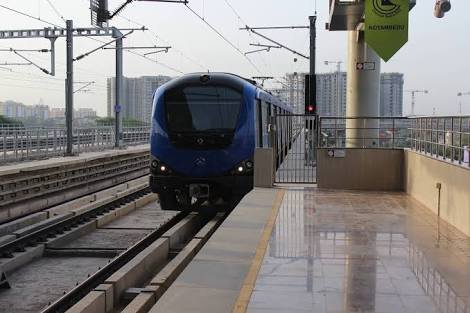15 years of Delhi Metro: Network expansion to go on for another decade, says Sreedharan

E Sreedharan, popularly known as Metro Man, had joined the Delhi Metro Rail Corporation on November 5, 1997 as the managing director. In an interaction with the Hindustan Times ahead of Delhi Metro’s 15th anniversary on Monday, Sreedharan called the landmark a “very proud and memorable moment”. He commended DMRC for having maintained a smooth operation in all these years without any passenger accidents or compromising punctuality and viability. Here are the excerpts:
Q: How was Delhi Metro conceived? Whose idea was it? How was it taken forward?
A: There was a proposal to start railway based Mass Rapid Transit System in the four metropolitan cities of the country for which government setup Metropolitan Transport Projects (MTPs) in Kolkata, Delhi, Mumbai and Chennai in the early 1970s. Only Kolkata took-off in the metro direction. In other cities, attempts were confined to improving the sub-urban systems only.
The Metro system was under consideration for Delhi ever since then but nothing materialized till RITES was commissioned to prepare the Detailed Project Report (DPR) in early 1990.
The first Phase of Delhi Metro covering about 53.5 kms was covered in this Detailed Project Report but it was only through a valiant approach of NP Singh, the then Secretary/Urban Affairs, Karnataka Cadre IAS Officer, who had an excellent rapport with the then Prime Minister, H D Deve Gowda which ultimately got the government’s nod for the metro in Delhi. Jai Kishan, the then Chief Secretary/Delhi also played the supporting role.
The unique organizational structure of Delhi Metro, 50% – 50% partnership with Government of India and Government of Delhi was given shape by the then MD of RITES, BI Singhal and me, when I met him in Dhaka (Bangladesh) during a joint project, while I was the Chairman and Managing Director of Konkan Railway. Judging by the Delhi Metro success, this organizational structure was a runaway success.
Q: What were the biggest challenges in construction of Metro?
A: When we started, the country did not have any experience, expertise or precedence for planning, designing and implementing a world class metro. This was resolved by engaging the international experts to assist DMRC. Another challenge was huge financial outlay that was needed for the project. The Japanese government offered a Japan Bank for International Cooperation (now Japan International Cooperation Agency) loan which made things easier for the government to start the Project.
Q: How did Metro change Delhi?
A: For me, the biggest change Delhi Metro has achieved is has changed the travel style of Delhi’s public. A growing number of commuters are today using the metro system. For travelling in a metro, commuters have to observe orderliness, discipline, patience and consideration for the fellow travellers. The Delhi metro, therefore, has brought a dramatic change in the social attitude of the people in Delhi.
Q: What, according to you, are the biggest challenges now for the Delhi metro?
A: Our trains are terribly overcrowded and train fleet strength has to be increased to solve it. The network expansion is also urgently needed and his need heavy investment.
Q: Metro is already the backbone of Delhi’s transportation system. Another 140 km will be added to the network soon and with phase four (103km), the Metro will hit its physical limits. Where does a city like Delhi go from here?
A: I don’t think even after completion of Phase –IV, physical limits for Metro network expansion will reach. The city is spreading fast so the Metro network expansion has to go on for another 10-12 years. Meanwhile to contain the population growth of the city, rapid intercity train services have to be introduced so that more and more people to prefer to stay away from the city and commute from RRTS.
Simultaneously, the bus fleet has to be increased at least by 3 times so that a reliable, convenient and affordable public transport system is available to at least 90% of the citizens. Government also has to bring in a number of disincentive measures to reduce the number of vehicles on the road.